X Email Mobile
| EXW Price: |
The price for this item is to be negotiated. Please contact supplier for further information.
|
|
Hailan Electronics Firm 13yr. |
|
| Main Products: |
mini vidicon,IP camera,monitor unit,travelling recorder,navigator,laser,pen,GSM audiomonitor and so on |
| Contacts: | chen meilanChat |
| Mobile: | 86-15958974290 |
| E-mail: | 1328627790@qq.com |
| WeChat: | 15958974290 |
| Address: | 17653 , 中 Street, 3 F, 35 Gate, International Trade Mart (District 2). |
Control installation
Note: the battery must be fully charged before daily operation! If it is not charged, it will cause the failure of EPX10000. If anything, this may be the first indication that the battery voltage is too low and must be charged. If the battery is still without power after being charged all night, the battery or charger shall be replaced, or the ac power outlet shall be without power. If the battery is partially charged, it may be necessary to replace the built-in battery. A new fully charged battery can run the EPX10000 for about eight hours.
Before opening the scanner, place the transmitter on the ground and connect the sensor antenna to the corresponding socket of the transmitter. When the transmitter is on. Never plug in or unplug a sensor; doing so will damage the machine.
Before using the EPX10000 scan, first make all necessary connections to the instrument.
1. Connect the sensor to the testing(+) testing(-) jack of the scanner and insert the probe of the sensor into the soil
2. The transmitting antenna device that emits the signal is on the corresponding interface.
3. Turn the \"On/Off knob\" with the power key to turn On the power. At this time, the liquid crystal display area, power indicator light, horizontal fine tuning, vertical fine adjustment indicator light on.
4. At this point, EPX10000 is scanning any selected element. Run for 3-5 minutes before starting the probe, which will be explained later.
5. After the operation, remember to turn off the power of EPX10000. For ease of use, the device's battery needs to be charged using a small charger connected to the device's power cord.

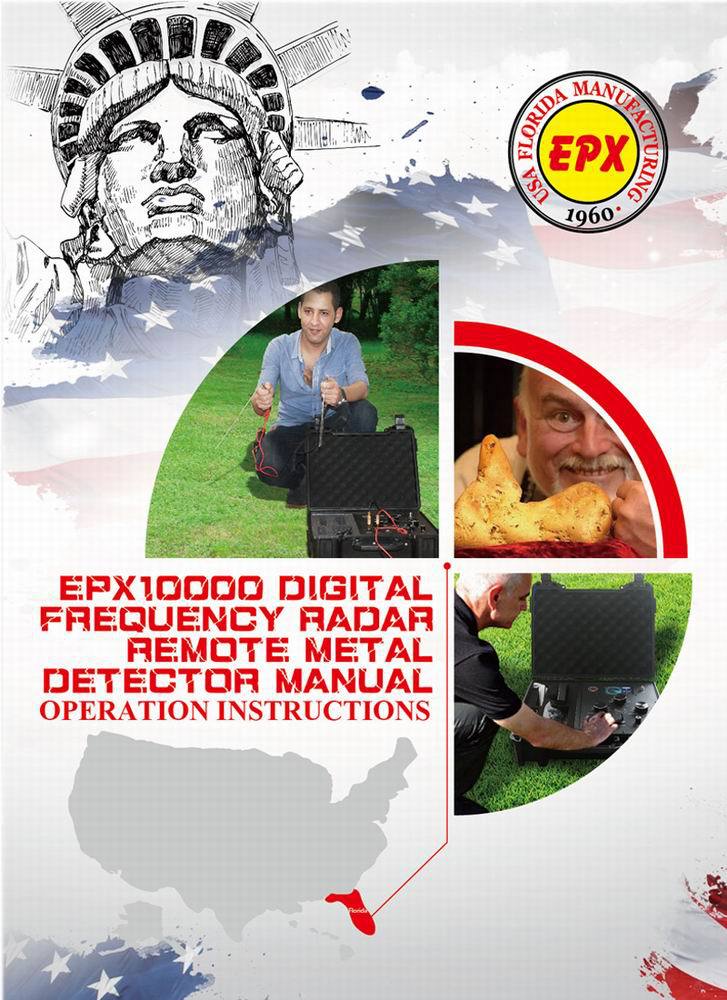
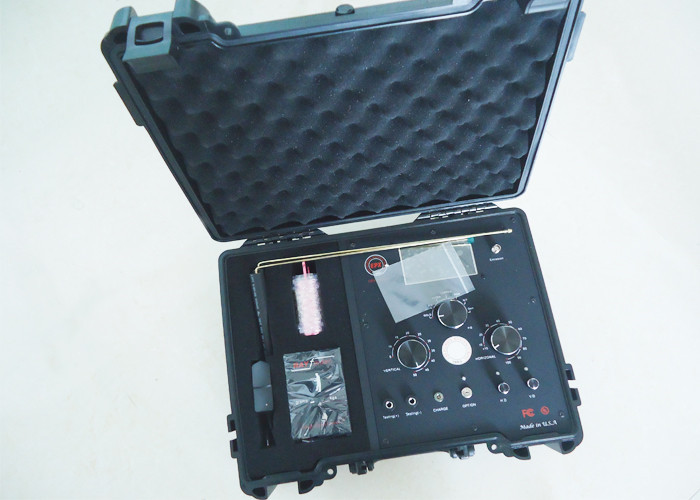
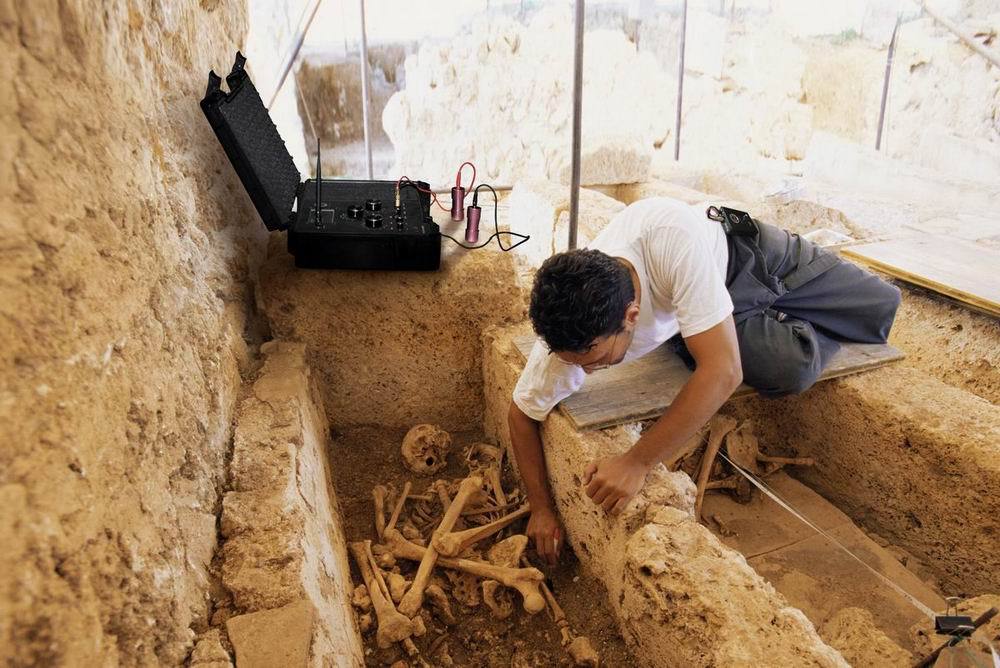
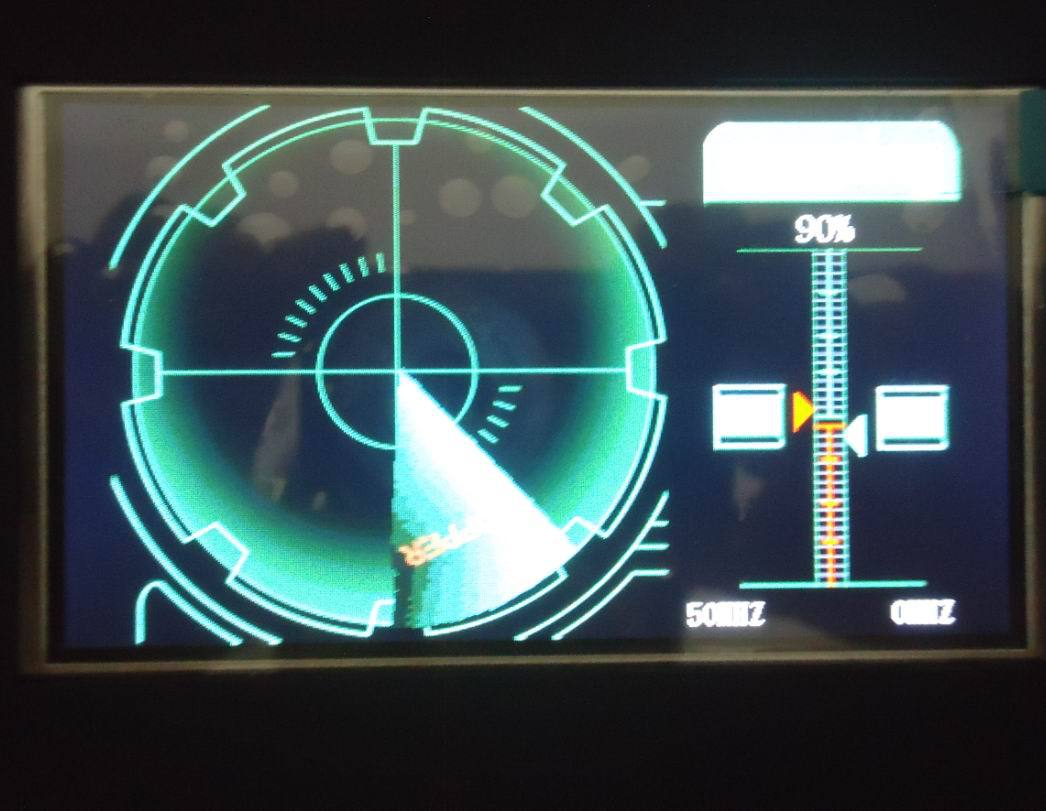
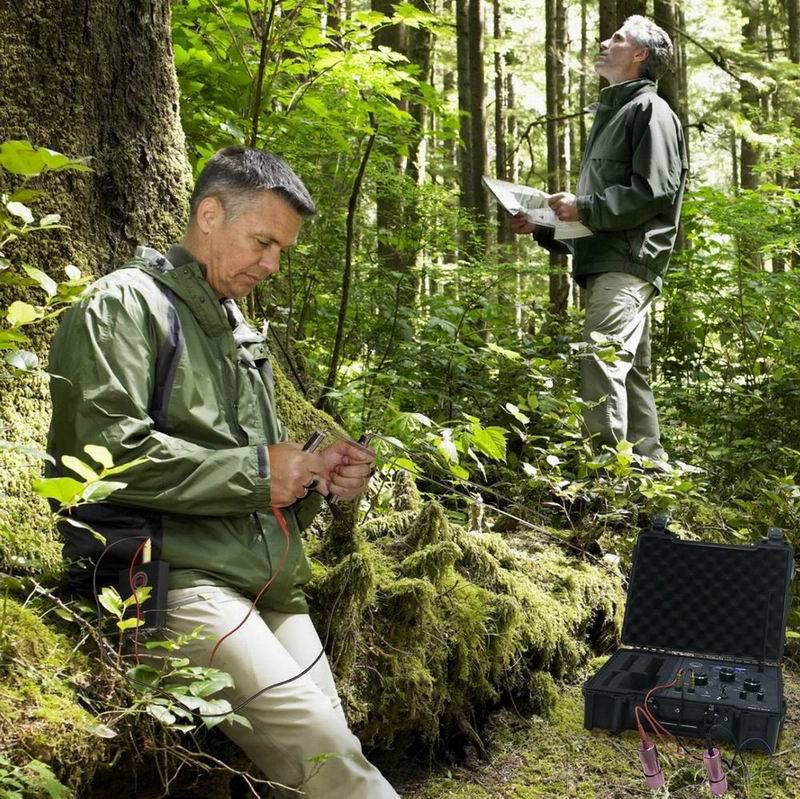
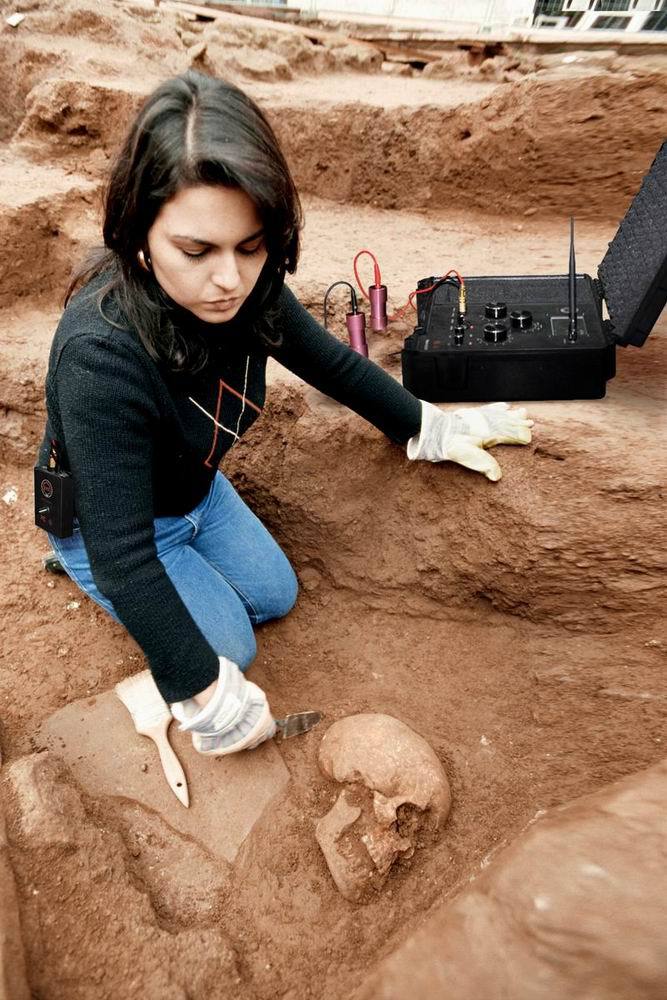
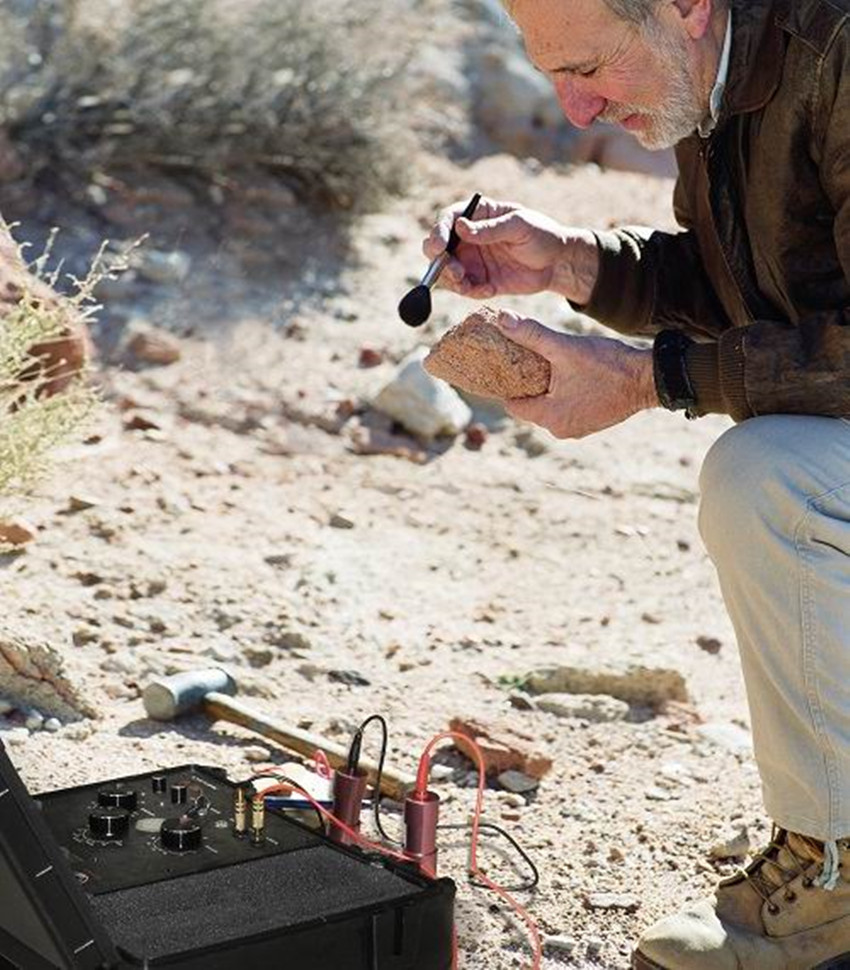
Ii. Technical parameters:
1. Depth range of jiaozhou :5-50m
2. Inspection distance range :100-1000m
3. Rechargeable battery: work continuously for 8 hours
4. Voltage :12VDC
5. Temperature range :450C and 850C
6. Working humidity :0~95%(non-condensing)
7. 16-bit processor.40MIPS speed -- 160MHz
8. 32-bit DDS synthetic chip Output waveform
9. Digital frequency synthesis X20PLL automatic frequency stabilizer, 0.1hz
10. Color LCD display with a resolution of 480x320 pixels
11. Net weight: 6.6kg and gross weight: 10.5kg
12. Product size: 47x37x13.5cm
Iii. Introduction to control panel:
Radar LCD scan display
Iv. Introduction to accessories
Receiver - the receiver on top of the panel is the knob switch, which is the headphone and antenna rod jack. When not in use, unplug the antenna rod from the receiver! If the antenna rod is stored in the receiver, the battery will leak.
Receiving antenna rod - the antenna rod is designed to indicate to the operator that he or she has stepped into the transmission line between the power sensor and the target. Under normal circumstances, the hand-held antenna rod should be stable and balanced, at waist height, and slightly in front of the operator. When holding the antenna bars, the antenna bars should point forward, parallel to each other, and be 8 to 18 inches apart. Everyone needs to find the best distance for themselves. It takes trial and error to find it. Remember, calm and relaxed people do better than tight and stiff people when it comes to operating the device! As you enter the rf energy line and measure something, the antenna bars will naturally cross and the radar scan pointer will stop in one position. As the antennae cross and the radar scan pause, you see the dawn of victory.
Receiver signal enhancer - used to enhance a signal.
V. operation method:
The key to the molecular frequency detector is the way to hold the receiver lever, as well as the position and alignment of the body.
The user must stand in a relaxed position with his feet slightly apart and his arms close to his body but not too tight. When holding the receiver lever, the palm and wrist should not be too hard, so that it will automatically reach the balance state in the hand, and always parallel to each other. Hand grip, make its parallel to the ground, in order to increase the sensitivity, or slightly downward sloping 5-8 °,
Achieve a better balance (if you are a beginner to molecular frequency detection).
The most important thing is to practice holding the poles until they are no longer \"removed\" from each other.
After the balance of the receiving pole is completed, the operator should learn the way of walking, step by step, and keep two poles balanced at the same time. It's another trial-and-error: the pace must remain at normal speed, firm and even. Cross the same distance every step, or the two strokes will lose their balance. Shrugging can cause the two poles to lose balance. Both shoulders should be kept at the same height. Try to practice and pay attention to maintaining these conditions.
The holding method, posture and walking practice of the receiving bar should follow the requirements of the test target test. The operator should put the test target object on the ground and observe the response of the receiving bar.
Once the \"start scan\" message appears on the screen, begin circulating about 3 meters from the EPX10000 probe, keeping the receiver rod in balance and inserted into the power module.
If there is a target object, when we walk on the transmission line between the target object and the EPX10000 ground detector, the two poles will cross completely. The transmission line is usually 15 cm wide for a single object. We can check it carefully to see if it is a stable signal. The operator then needs to return, relax, and move to the transmission line again. If the receiving bars cross each time, then we can track the target signal according to the signal tracking diagram in example 2. There will be no indication when the operator passes through the buried object. The object is located between the last cross position of the bar and the position without cross display. A metal detector can be used to accurately locate a target object. Refer to our example and keep on practicing for better results.
The working principle of scanner and the orientation of triangle rule
The SCANMASTER research center spent years testing theories, ideas and devices before developing the transmitter, which is small and powerful and capable of transmitting radio frequency (RF) signals remotely through soil. The signal 360o is sent into the soil in all directions. It is this inductive energy that allows the target to be detected.
The signals emitted by the scanner go underground via a power sensor. If the target is within range, the signal is absorbed by the target. The indicator rod is inserted into the power amplifier to complete the receiver circuit. The circuit is formed through the operator's human capacitance and power module inductance components. The circuit will play an active role as the operator walks through the transmission line between the scanner and the target. The inductance rf energy from the transmission line interacts with the inductor capacitance of the operator's circuit. At this point, the normal reaction is to indicate that the bars are attracted to each other. This is actually a message to the operator that the target is within the range of the scanner.
The range of the scanner varies with many factors. The first and most important variable is the target size. The second is the soil condition (presence of electrolytes) and the length of time underground. Another factor is chemical changes in the soil around the target, which can enhance the scanner's performance. For targets that are easy to oxidize, both the object itself and its container will send a stronger signal. The potential for the target amplification scanner to transmit signals will be greater due to oxidative factors. There are targets within the range, and as your feet begin to step into the energy line, the antenna bars will normally attract each other. Under normal circumstances, the energy line width of a single target is 20 inches.
Once the energy line is determined, the next step is to measure the target using the s-line measurement or triangulation method.
Find the signal line around the transmitter, as shown in the figure, trace the signal line by going back and forth through the s-type. When you pass the signal line for the first time, the receiving antenna should cross (mark the position of each crossing of the antenna). When you pass the target, the antennas no longer cross.
6. How to use triangle rule to locate the inaccessible region
The scanner works just as well as a target on a level ground when one wants to determine the location of a target that is inaccessible (e.g., a lake or a stream), such as a water body or a cliff. The most important thing to remember is that the operator must be able to enter between the target and the power sensor so that the antenna rod can indicate any potential target. Obviously, you can't take the antenna rod underwater. The best method is to speculate on the situation and apply some basic geometry to triangulation of a target from a shore or a large deck vessel.
When operating from the shore, look first to see if there are any targets within the measurement range of the scanner. If anything, the first step is to move the scanner, which is also the easiest step to make it work on one of the four main points of the compass (north, south, east or west). The second reading should be with the first reading a 45 ° Angle. For example, if the first reading is due west of the target, the second reading can be due northwest or positive southwest. See the picture below.
From ship operations, there are some interesting challenges for operators. The first challenge is deck size. The operator must be able to have a radius of about 5 '-10' centered on the power sensor. Second, the probe of the power sensor must be in contact with the ship's deck. To solve this problem, wrap the probe with a wet towel that comes in contact with the deck. The rf energy will be along the target direction and the deck surface. Buoys are needed to help triangulate targets. The rest of the process is very similar to the first
Note that position #1 is in the positive west direction of the target. Location #2 is in positive southwest. In view of this situation, we finally have two Angle of 45 ° and 90 ° Angle. So the distance from position #1 to position #2 is equal to the distance between position 1 and the target. As a result, you've measured the target using triangulation, now know the distance from position #1 to the target.
Equipment maintenance
EPX1000000 requires little maintenance. The indicator rod is susceptible to corrosion by salt and water vapor in the environment and needs to be cleaned regularly with a good quality brass cleaner to ensure a good appearance and performance.
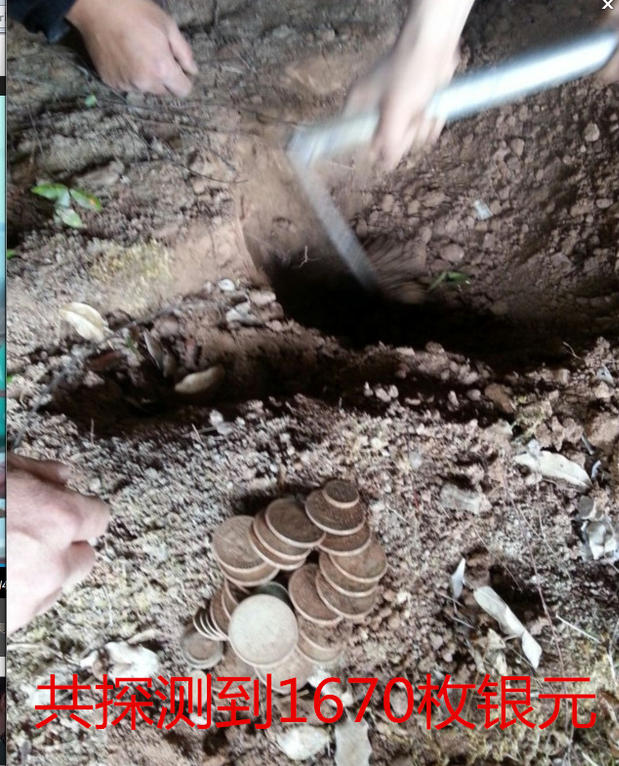
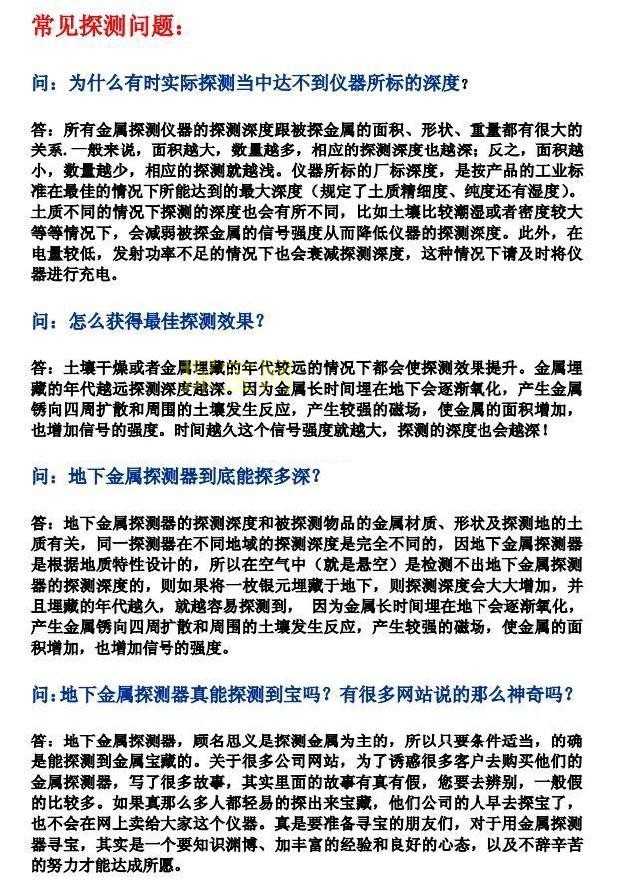
TOP
Items have been added to the Inquiry Basket
There are items in the inquiry basket